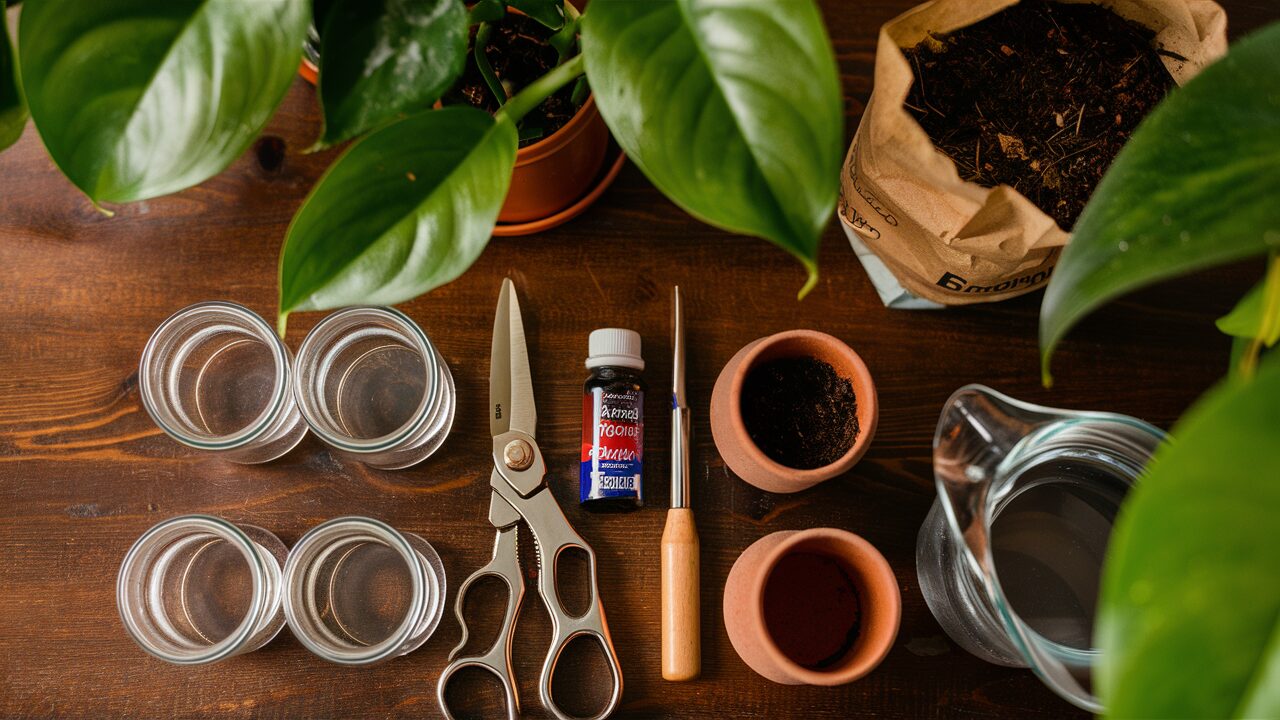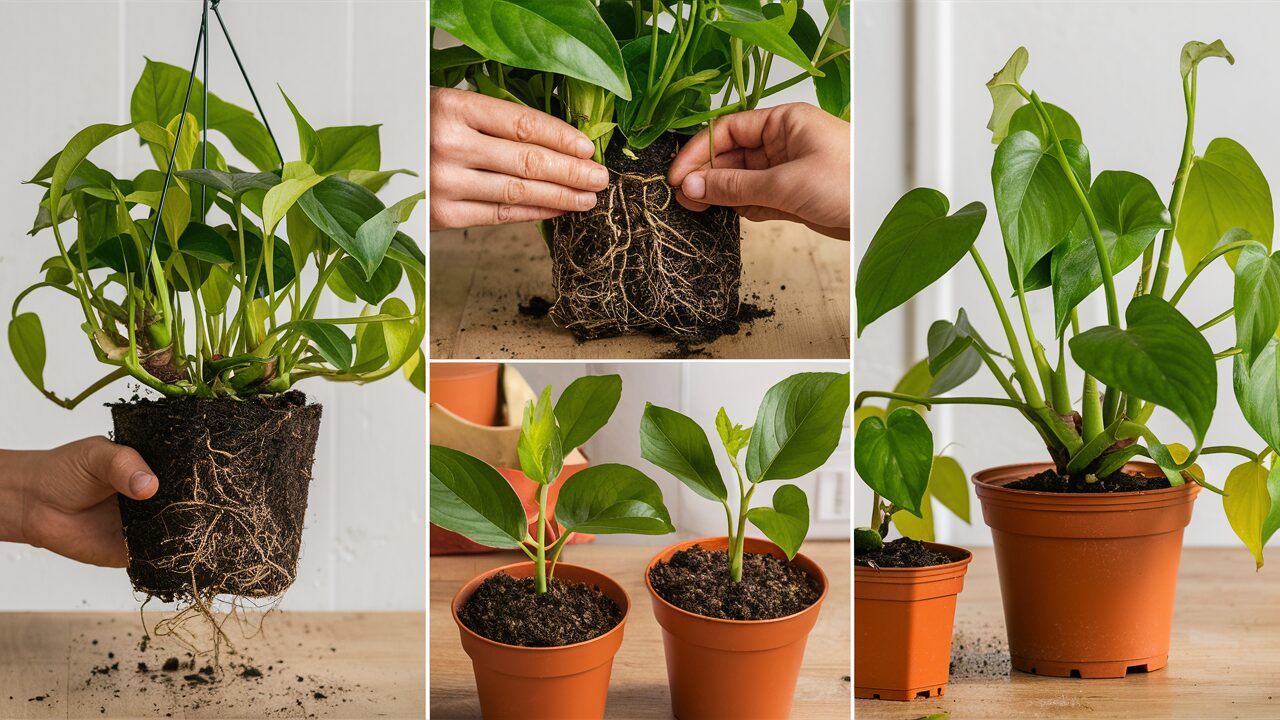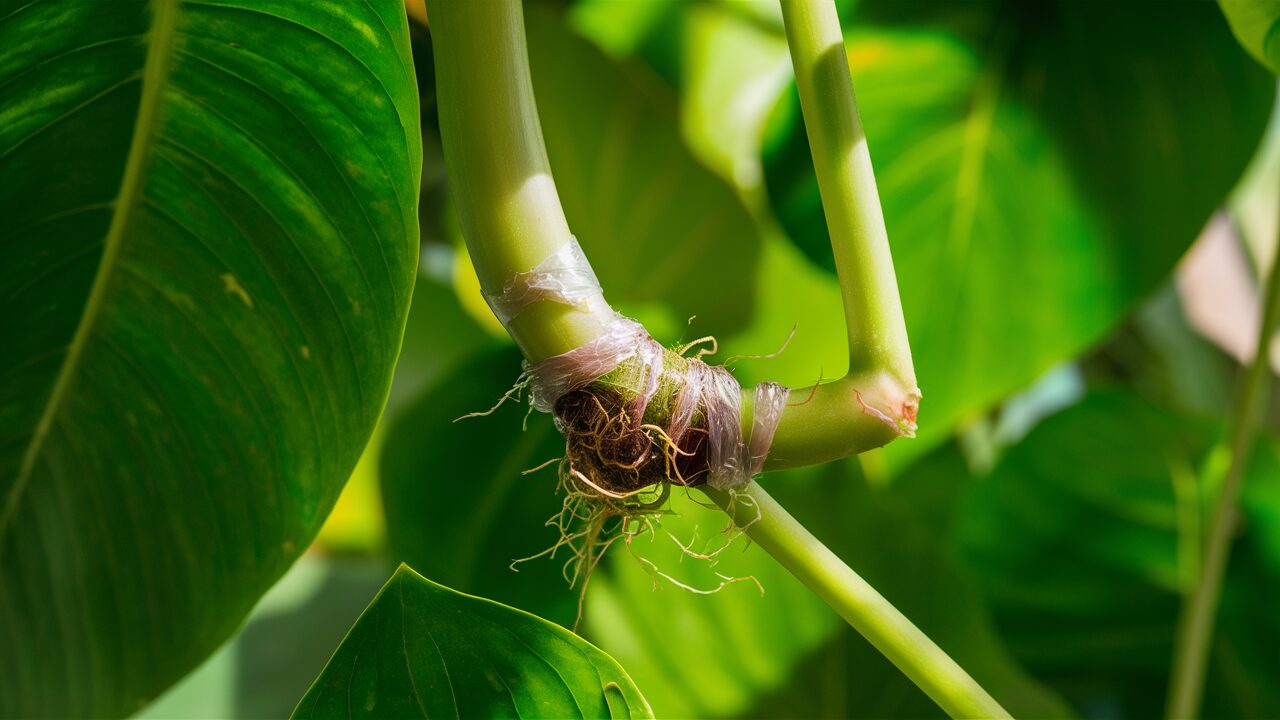Pothos plants are among the most popular houseplants, and for good reason. They’re hardy, low-maintenance, and incredibly easy to propagate. Whether you’re a seasoned plant parent or a beginner just starting out, propagating pothos is a fantastic way to expand your indoor jungle without breaking the bank. In this guide, “Pothos Propagation | The Fastest and Simple How-To Guide “, we’ll walk you through everything you need to know. Let’s dive in!
Why Propagate Pothos?
Propagating pothos is not only a cost-effective way to expand your plant collection, but it also promotes plant health by preventing overcrowding and encouraging new growth. Whether you are looking to share plants with friends or enhance the fullness of your existing pothos, propagation is a rewarding and straightforward process.
Ideal Time for Propagation
The optimal time to propagate pothos is during their active growing season, which spans from spring to summer. During this period, the plant’s energy is focused on growth, increasing the likelihood of successful propagation. Avoid propagation during the fall and winter months, as the parent plant’s recovery and root development can be hindered by the dormant phase.
Materials You’ll Need
Before we get into the nitty-gritty of how to propagate your pothos, let’s gather all the supplies you’ll need. The best part? You probably already have most of these items at home!
Basic Supplies
- Sharp scissors or pruning shears: For cutting the stems
- Small glass jars or containers: For water propagation
- Potting mix: A good quality mix to ensure healthy growth
- Small pots: For planting cuttings in soil
- Rooting hormone (optional): To encourage root growth
- Clean water: Preferably filtered or distilled

How To Propagate Pothos
Pothos propagation can be done in 5 main ways: water propagation, soil propagation, division, sphagnum Moss, and air layering. Each method has its pros and cons, but all are quite straightforward. Let’s break them down!
1. Water Propagation
This is the most popular method due to its simplicity and the joy of watching roots grow in real-time.
Steps for Water Propagation
- Select a Healthy Stem: Choose a healthy vine with several leaves and at least one node (the knobby part where leaves and aerial roots grow).
- Cut Below the Node: Using sharp scissors or pruning shears, make a clean cut just below a node.
- Place in Water: Remove the bottom leaves, leaving one or two at the top, and place the cutting in a small glass jar filled with water.
- Change Water Regularly: Change the water every few days to keep it fresh and prevent bacteria buildup.
- Wait for Roots: In 2-4 weeks, you should see roots starting to form. Once the roots are a few inches long, you can transfer the cutting to soil.
2. Soil Propagation
Soil propagation is another easy method that allows roots to develop directly in their growing medium.
Steps for Soil Propagation
- Prepare the Pot: Fill a small pot with moistened potting mix.
- Take a Cutting: Follow the same steps as in water propagation to cut a stem just below a node.
- Apply Rooting Hormone (Optional): Dip the cut end in rooting hormone if you have it.
- Plant the Cutting: Insert the cutting into the soil, ensuring the node is buried.
- Water and Wait: Water the soil lightly and keep it consistently moist. In a few weeks, new roots will form, and you’ll see new growth.
3. Division
Division is ideal for larger pothos plants that have grown too bushy.
Steps for Division
- Remove the Plant from Its Pot: Gently remove the pothos from its current pot.
- Separate the Roots: Carefully tease apart the roots to divide the plant into smaller sections, each with its own root system.
- Replant Each Section: Place each section in its own pot filled with fresh potting mix.
- Water and Care: Water each new plant and continue regular care.

4. Air Layering
Air layering is a bit more advanced but very effective for larger plants.
Steps for Air Layering
- Choose a Node: Select a node on a healthy vine where you’d like new roots to grow.
- Create a Small Cut: Make a small cut halfway through the vine, just below a node.
- Wrap with Moss: Wrap moist sphagnum moss around the cut area and secure it with plastic wrap or aluminum foil.
- Wait for Roots: Keep the moss moist and in a few weeks, roots will start to grow from the cut area.
- Cut and Plant: Once roots have developed, cut below the new root ball and plant it in soil.

5. Sphagnum Moss
Sphagnum moss is an excellent medium for those who have experience with plant propagation. It provides the perfect balance of moisture and aeration.
Steps for Sphagnum Moss
- Prepare Moss: Soak sphagnum moss in water for 20-30 minutes to rehydrate it.
- Take Stem Cuttings: Cut 4-6 inch stem segments with 3-4 nodes.
- Remove Bottom Leaves: Remove the bottom leaves, leaving 1-2 leaves at the top.
- Insert Cuttings into Moss: Place the cuttings in the rehydrated moss, ensuring the nodes are covered.
- Maintain Moisture: Keep the moss moist but not soaking, and place the cuttings in bright, indirect light.
Tips for Successful Propagation
- Be Patient: Rooting can take time, so don’t get discouraged if you don’t see results immediately.
- Maintain Humidity: High humidity can encourage root growth. Consider placing a plastic bag over the cutting to create a mini greenhouse.
- Use Clean Tools: Always use clean scissors or shears to prevent infection.
- Monitor Light: Keep your cuttings in bright, indirect light. Direct sunlight can scorch them.
Propagating pothos is a rewarding and straightforward process that can breathe new life into your indoor garden. Whether you choose water, soil, division, or air layering, you’ll soon have new plants to enjoy or share with friends. Remember, “Pothos Propagation | The Fastest and Simple How-To Guide ” is here to help you every step of the way. Happy gardening!
By following this guide, you’ll become a pro at pothos propagation in no time. Enjoy watching your plant family grow and thrive!
FAQs
Can I propagate pothos in low light?
While pothos can tolerate low light, propagation is most successful in bright, indirect light.
How often should I change the water in water propagation?
Change the water every few days to keep it fresh and oxygenated.
Do I need rooting hormone?
Rooting hormone isn’t necessary, but it can speed up the rooting process and increase success rates.
What if my cutting doesn’t root?
If your cutting doesn’t root, try again with a different stem. Sometimes, certain cuttings just don’t take.
How long does it take for roots to form?
It typically takes 2-4 weeks for roots to form, but this can vary based on conditions like light, temperature, and humidity.










